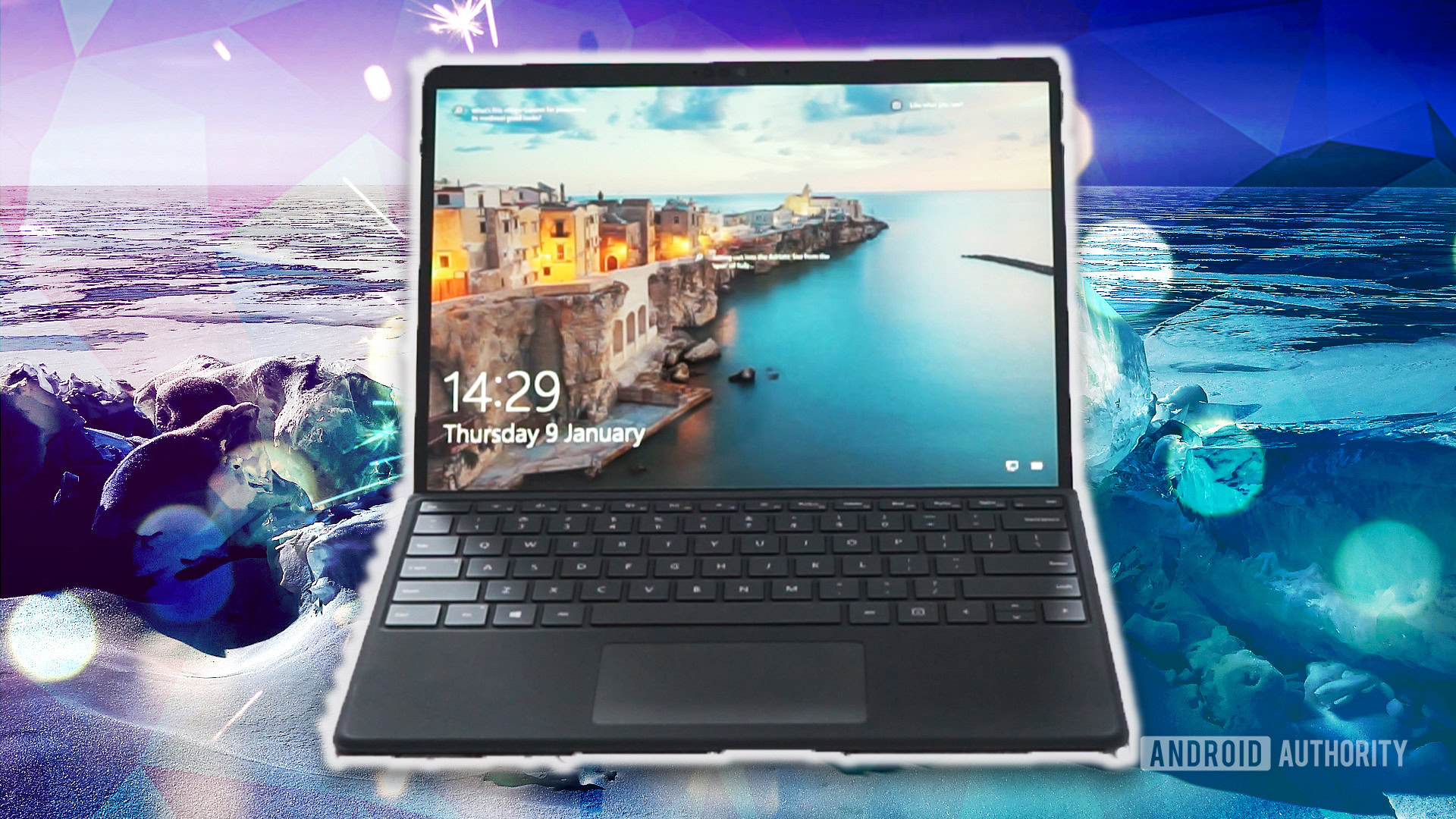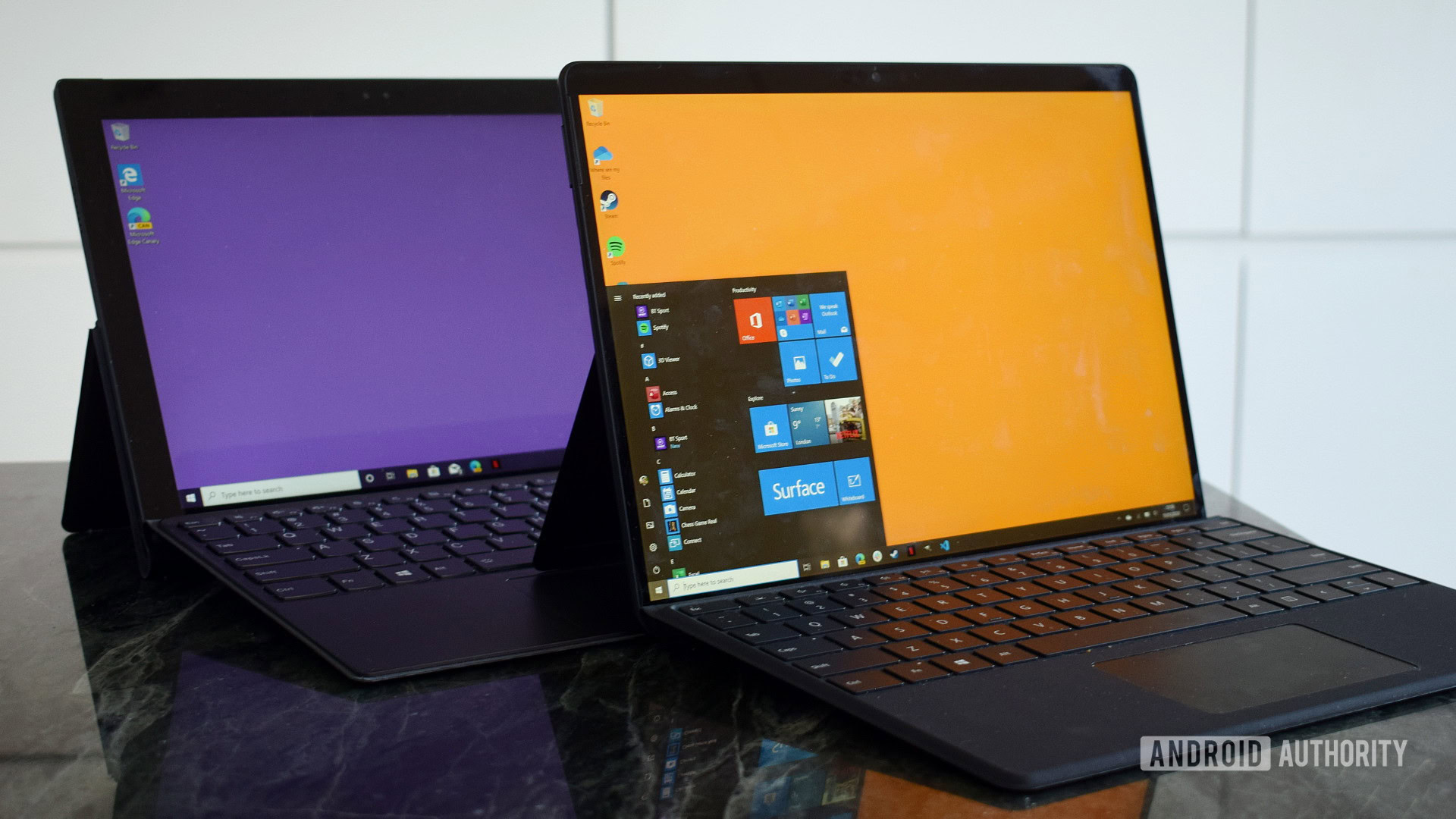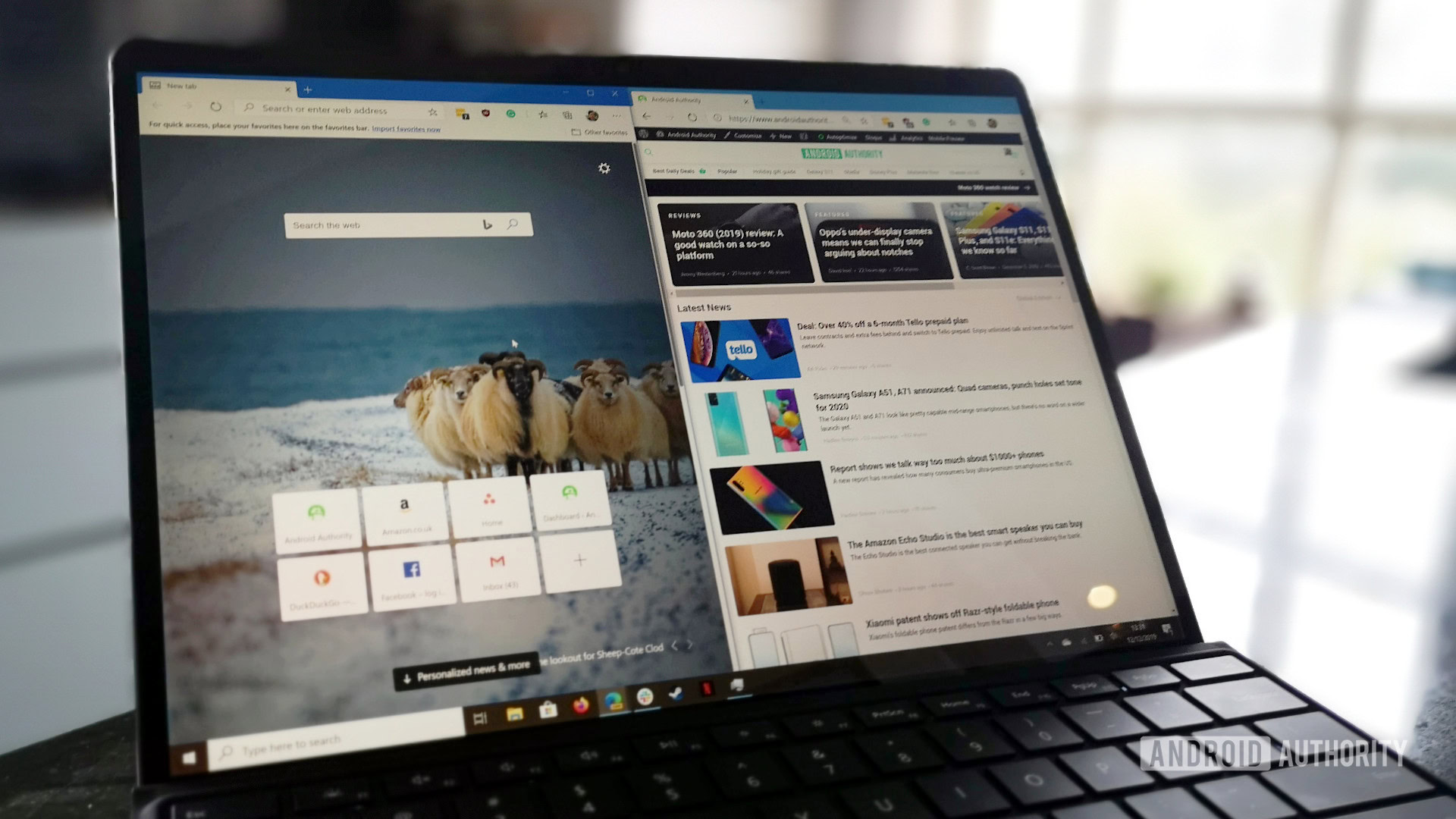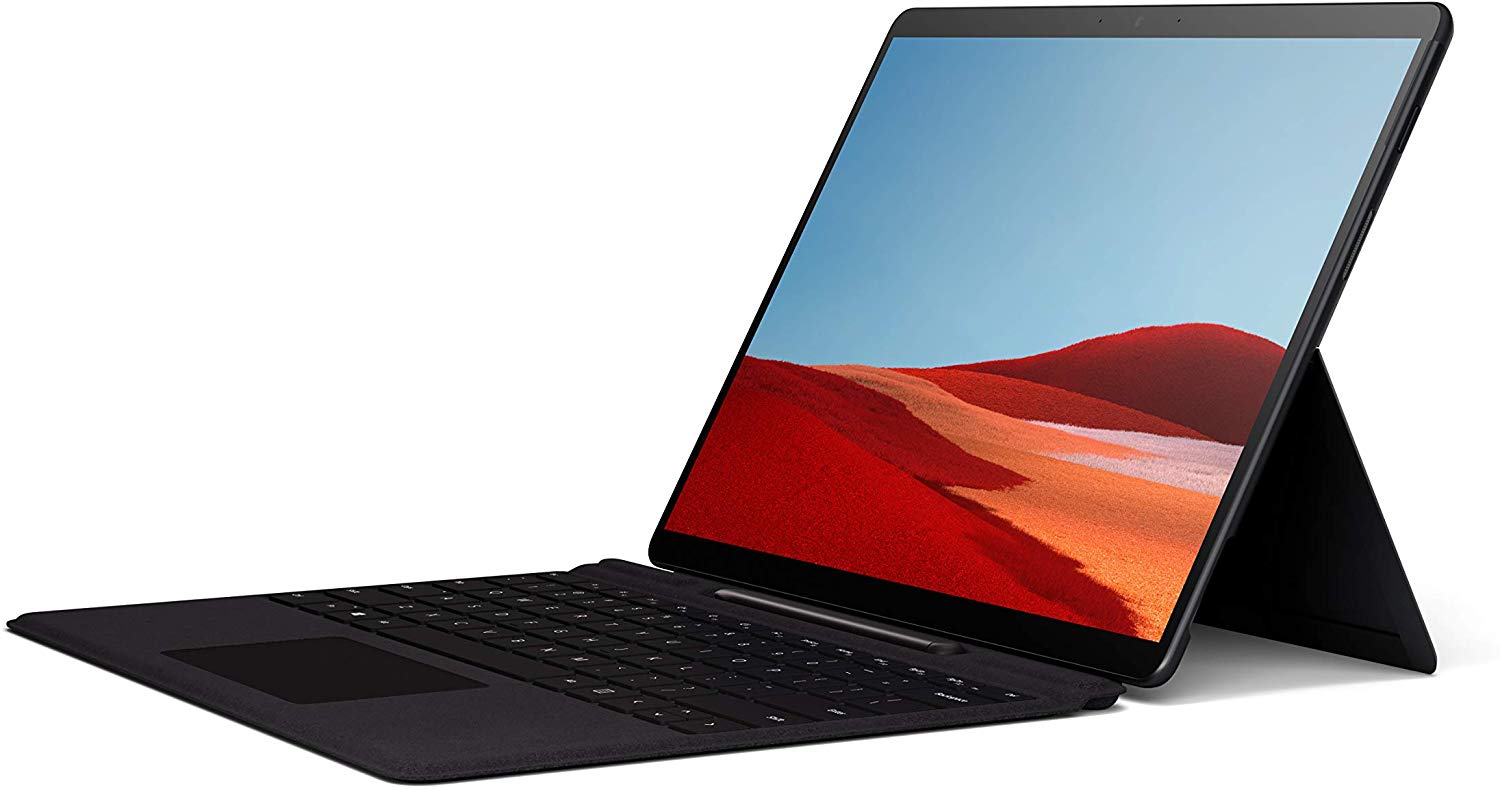Affiliate links on Android Authority may earn us a commission. Learn more.

Microsoft Surface Pro X
What we like
What we don't like
Microsoft Surface Pro X
Microsoft’s range of 2-in-1 Surface Pro laptops has been around since 2012. They feature distinctive detachable keyboards and have touch screens. This means they can be used as a laptop or as a tablet. Until recently these devices ran 64-bit Windows on Intel processors, however, that all changed with the launch of the Surface Pro X. Instead of an Intel processor, the Surface Pro X uses Microsoft’s own processor the Microsoft SQ1. The SQ1 is an Arm-based processor built in partnership with Qualcomm. It is basically a Snapdragon 8cx processor with some specification tweaks from Microsoft.
Why Arm, and why now?
Microsoft has a love-hate relationship with the processors that run its software. On the one-hand Windows and Intel are almost synonymous, oftentimes being shorted to Wintel. On the other hand, Microsoft dreams of being platform agnostic. More so now in the age of the cloud. Windows NT (circa 1995) ran on x86, MIPS, and Alpha. Windows NT is part of Windows 10‘s heritage and there is no technical reason for Windows 10 to run just on Intel (or AMD) processors.

Windows NT 3.51 and Windows 8 RT, are a couple of examples where Microsoft has tried to branch out beyond x86. Windows 10 on the Surface Pro X is different for a number of reasons. To switch away from a mature and stable architecture (x86 and x86-64), you need a compelling reason, and Microsoft has found three of them.
First, Arm processors are designed to be power-efficient, that is why we all use Arm processors in our smartphones. Power efficiency means you don’t need a fan. Secondly, this power efficiency also contributes to longer battery life. Thirdly, this new breed of 2-in-1 devices and laptops all come with LTE built-in, as part of the “Always Connected PC” paradigm. Qualcomm’s Snapdragon 8cx comes with a built-in 4G LTE modem, and therefore so does the SQ1.
But is the Surface Pro X any good?

As a 2-in-1 the Surface Pro X can be used as a laptop or as a tablet. The keyboard is detachable and is easy to reattached due to the guiding magnets. While the 2-in-1 concept offers flexibility and versatility, it does mean that the keyboard is thinner than a normal laptop and as such long periods of typing will be harder than on a desktop or a laptop with a good keyboard.
Unlike a normal laptop, the “guts” of the device aren’t in the base, under the keyboard, but rather behind the screen, like a tablet. To place in the Surface Pro X in a laptop type configuration there is an adjustable kickstand on the back of the tablet part.
Overall all the Surface Pro X’s design is clean, smooth and even eye-catching. The display is a joy to use and certainly enhances the overall experience.
Microsoft claims that the battery in the Surface Pro X lasts around 13 hours. I did several battery tests and when watching a movie from the local storage, or over the local network (using Wi-Fi), I was able to get 14 hours of battery life. So, the claimed 13 hours of “typical device usage” is accurate.
Windows on Arm performance
The Microsoft SQ1 is an octa-core processor peaking at around 3GHz. Defining the performance characters can be tricky. Not only do we need to look at different the traditional workloads (productivity, gaming, creativity, IO intensive, etc), but we also need to look at the difference between native performance (programs using ARM64 binaries) and emulated performance.
In a nutshell, the Surface Pro X works great as a productivity/business laptop. It will also handle some casual 3D gaming, even if using emulation. At the moment creativity suites, like Adobe’s Creative Cloud, aren’t native to Windows on Arm and therefore this device can’t be recommended for that type of work. More details on performance can be found in the video.
App compatibility is not 100%
Since this is an Arm-based laptop, its software needs to be specially compiled to support Arm rather than x86. The number of apps compiled in this way is increasing and there are commitments from companies like Adobe to bring more. When the laptop needs to run some x86 software it will use emulation. The downside is speed and battery life, however, compatibility is impressive, but probably not 100%.
Unfortunately, there is no support for 64-bit Windows apps at the moment (but it is coming), so you need to use 32-bit versions. However, the Windows Subsystem for Linux (WSL) natively supports 64-bits Linux binaries.
Robert Triggs has written an excellent guide to the current state on Windows on Arm that you should check out here.
Is the Surface Pro X worth it?
The biggest, non-tech related, problem with the Surface Pro X is the price. Ignoring offerings from Dell, HP, Lenovo, etc., the Surface Pro X faces stiff competition from other devices in the Surface range. The 8GB/128GB Surface Pro X with the cheaper of the two keyboard options will cost you around $1,140. But an 8GB/128GB Intel i5 will cost you around $1,030. True, the Surface Pro 7 has a slightly smaller screen that Surface Pro X, and offers only 10.5 hours of battery life, but it costs $110 less and no issues about software compatibility.
Likewise, the Surface Go costs just $800 for the 8GB/128GB model including a keyboard. It also comes with LTE built-in and a hassle-free Intel processor. Having said that, the Intel Pentium Gold 4415Y Processor, probably slower than the SQ1 even when Microsoft’s processor is emulating an x86 processor!
The bottom line is that for the Surface Pro X to be attractive to anyone other than those that want to invest in Windows on Arm solutions, it needs to be cheaper.

So, design? Check. Display? Check. Battery Life? Check. Native performance? Check? Software compatibility? Hmmm, not so much. Value for money? Fail.
If you are looking for a productivity/business laptop and use Office or Office 365 (but not apps like Adobe’s creative cloud) then this could be a good option. For web browsing (using the Arm native version of Microsoft Edge, or Firefox), for media consumption (Netflix, Amazon Prime Video, or Disney Plus), for those who always need to be connected, then the Surface Pro X has a lot to offer.
However, if you need 100% x86 compatibility and if you are on a budget, then there are probably better options available, even from Microsoft itself.
